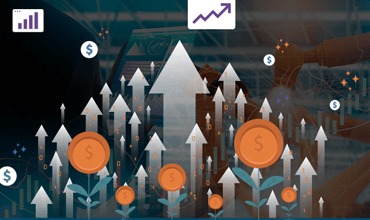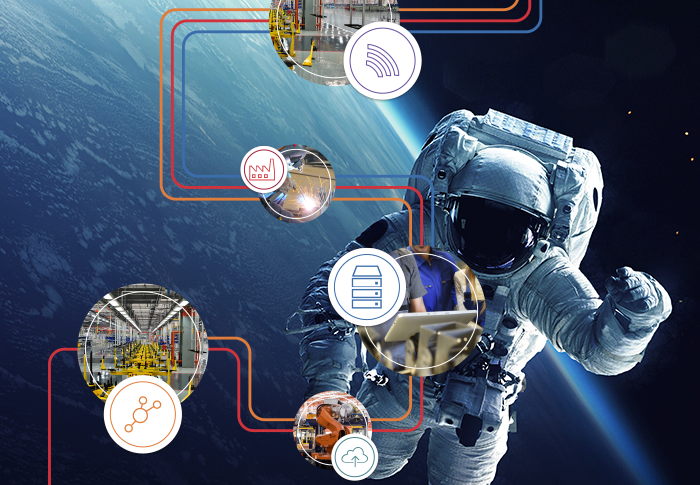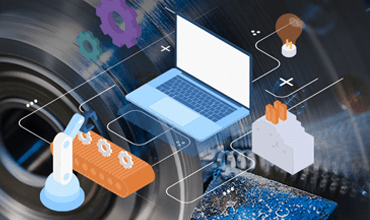IIoT Value Summary and Meaning
How does IIoT work? IIoT (Industrial Internet of Things) technology provides increased opportunity in the value of data, seen as an essential component of any modern software solution in manufacturing. FactoryLogix is the world’s first IIoT-driven manufacturing software platform to natively support IIoT communication, fully utilizing the latest IIoT standards.
The availability of IIoT data from machines and operations brings consistency, detail and timeliness to data acquisition, with greater reliability and dependability for operational management control and automated decision-making. Contextualization of individual events reported by automated processes is performed by FactoryLogix to create value from information, usable in real-time as well as for analytics processing and reporting. Traditional costs associated with data acquisition, which typically have impacted the cost of an installation significantly where bespoke interface development was necessary, are eliminated through the use of IIoT standards, making real-world deployments easier and shorter, with a far more rapid return on investment (ROI).
What Is IIoT?
Practically, IIoT is the replacement of conventional interfaces where machines or systems communicate to each other as manufacturing is being performed. Though many refer to IIoT software as being an interface, the characteristics of IIoT are quite different.
In the case of a legacy interface, either a single party, for example an SMT machine vendor, has created a format in which to represent data that they expect customers will need, or, a bespoke project has been created in which specified content is agreed between the machine vendor in this example, and the customer.
Single Party Interface:
The machine vendor looks out into the industry, decides the transport mechanism with which to send the data, the way in which the data will be encoded, and the content of the data based on commonality of past customer requirements. These interfaces rarely satisfy the needs of customers other than those that have the basic, simplest requirements. Each instance of such interface from different vendors, or across different machines from the same vendor, is almost guaranteed to be different.
Customer-Driven Interface:
The customer will present a set of required data content to a vendor, normally with an expected or negotiated method of data transfer and encoding. To do this, a non-disclosure agreement is exchanged, and work performed on specifying, developing and testing the interface. This usually entails between four and eight weeks of professional services per interface. These interfaces are not normally re-usable between customers, as requirements usually differ. Solution providers’ requirements follow the same path as those for a customer, though are more detailed, as solution providers have greater experience of a wider range of needs and requirements. This makes the interface more valuable, but also more expensive to create and maintain. As with the single party interface, each instance of such interface is almost guaranteed to be different, meaning that separate support is needed by any party intending to utilize it.
Such interfaces are quite volatile, as they are normally specific to a machine type, model or version, such that re-development may be needed each time the machine is updated, or replaced with another model.
IIoT Data Exchange
Successful and sustainable IIoT bi-directional data exchange, needs to be based on an open industry standard, so that data can flow freely between all parties across the IIoT network, without the need for data conversion or translation of any kind. Data format and content is consistent, effectively one language, one mechanism, plug and play. The need to continuously change and adapt data content is avoided, as is the associated expense and disruption to other users.
Unlike legacy interfaces, IIoT data shared as part of an entire network of machines and applications, including cloud-based solutions, must cover every requirement that potential users of the data may have, across a range of applications covering every aspect of manufacturing. Machine vendors on their own cannot predict every potential use-case, in order to define the complete data format and content, even with input from key customers. Doing so in isolation from the industry as a whole, the result would always be incompatibility with other machines and systems, incomplete datasets, and middleware at every point of use in order to try to create the translation of data from all sources into a single usable meaning.
What IIoT is Not with Examples
There are several data communication standards in the industry, many dating back several years. Though the majority of these have been effective at delivering the data that was expected, these are actually designed as simple interface standards, for the transfer data from point to point, to be then interpreted by bespoke software or middleware. Specific content of data is not defined, resulting in the issue where data from any two sources can be completely different, mandating the use of bespoke customized middleware in each case in order to make sense of the data. This therefore does not fulfill the requirement of IIoT.
FactoryLogix & IIoT Data Contextualization
Seeing the step-change in data acquisition technology taking place, FactoryLogix was developed ground-up to be a modern, singular, IIoT-driven platform for Smart manufacturing, with native support for IIoT software, together with a rich library of existing interfaces. This contrasts with legacy MES, MOM and PLM systems existing in the market that have been created based on older technologies and processes around traditional interfaces. Being typically made up of several “point solution” applications, non-IIoT-driven solutions collect data and simply store it in a database. Applications then need to interrogate several different databases, putting together disparate fragments of data to try to formulate meaningful reports. In the case of FactoryLogix, all of the data is stored together, such that added value context is continuously known.
FactoryLogix is unique in that all data flowing in to the platform, especially IIoT data for which FactoryLogix has been specifically designed, is stored together as a single dataset, such that contextualization of the data, from whatever point of view is required, is available immediately and reliably, without the need to synchronize external databases. This enables decision-making, feedback and anomaly detection to happen in real-time, representing a unique layer of value.
The benefits that this brings is reflected in the flexibility, timing, reliability and dependability that the FactoryLogix functionality represents, which can be trusted to make automated decisions that immediately impact the successful manufacturing operation.








